Category: Global minds
Interview with Ekaterina Morozova: love and loyalty of dogs
• • • Dedicated to those who taught us to love, even when we didn’t deserve it.
“Mom, why don’t you love me anymore? I climbed onto the couch to be closer to you, because at night it’s so cold and scary to sleep alone. Mom, will we roll in the grass today? It has such a wonderful smell of freedom—oh, if only I could soak it in from head to toe! Mom, where are you going again? Take me with you! I’ll be as quiet as a whisper. Do you know how hard it is to count the minutes until you return? I got all muddy again, tore your things, and once more did everything wrong, not the way you taught me. I’m far from perfect, but I will love you forever.”
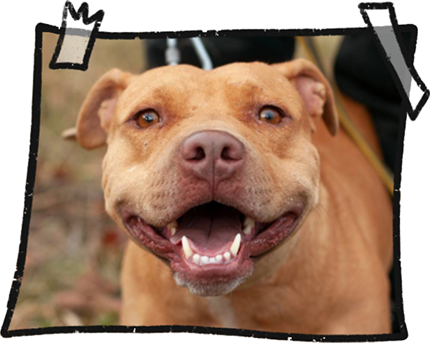
It feels like now—just now—that very person will come closer, pick me up, and make everything right. But instead, there’s the slam of a door, the crunch of gravel under the wheels, and endless silence. This is how the story of every dog who ends up in a shelter begins.
This conversation is not about dogs—it’s about us: about human actions that others pay for with their lives, about the cruelest betrayals, about compassion, about unconditional love and unconditional loyalty, about despair and hope.
Our interlocutor is a person who, every single day, absorbs broken destinies and still manages to keep faith in humanity. We spoke with Ekaterina Anatolyevna Morozova, an employee of the Sheremetyevo Shelter, part of the non-profit Animal Assistance Center “Into Good Hands”.
Bank details for helping the shelter:
ANO “V Dobrye Ruki” (Autonomous Non-Profit Organization “Into Good Hands”)
Taxpayer Identification Number (INN) 5047262441,
Acc. at AO Raiffeisenbank 40703810000000003458,
BIC 044525700,
Corr. acc. 30101810200000000700
— Ekaterina, thank you so much for agreeing to such a difficult conversation. Shall we begin?
— Gerda, thank you, of course.
— It’s no secret that almost everyone’s heart tightens when they see a stray cat or dog. Most of us help homeless animals only in passing: we might buy a pack of food, repost a message that someone’s pet is missing, or even pet a poor creature before walking on with a fleeting sadness. But only a few dare to turn that momentary compassion into the work of their entire life. How did your path begin?
— I learned about the Sheremetyevo Shelter, where pit bulls and Amstaffs live, many years ago. And the first thing I thought when I heard such a place existed was: “God, please, don’t let me ever end up near that shelter. What if one of them escapes the cage and attacks…”
Years passed. We got our first dog. Then I subscribed to the shelter’s page and began providing financial support: transferring money for food and treatment. A couple of times I even thought of going there, just to see the dogs. But my husband was categorically against it and discouraged me: “Dogs like that have broken psyches, they’ll never trust people.”
Time went by, and we got another dog—a pit bull girl, though not from a shelter. Later we even had a lynx. But at some point we realized the lynx could no longer keep up with the pit bull’s energy. Even though they were very close, their games started to change. That’s when I decided it was time to get another dog. My husband resisted, but I kept persuading him.
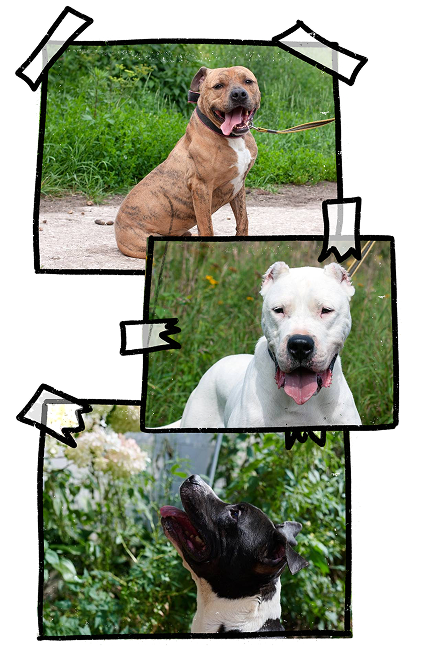
So, for my birthday, instead of gifts, I asked friends to give me things needed for the shelter: food, dog beds, leashes, medicines. All of them fulfilled my request, and my husband and I brought these gifts to the shelter.
That was our first visit. And we were astonished: the dogs were nothing like we had imagined—they were friendly, open, well-balanced. My husband kept repeating the same phrase: “How come they’re not attacking us? How come they don’t want to bite us? They’ve been betrayed—and yet they still trust us…”
We handed over the gifts and talked with the staff. They gave us two dogs, and of course, accompanied by the shelter workers, we took them out for a walk. And that day, everything changed. For me, that moment also became a personal healing of an old wound—the only way out I saw was to give my love to a shelter dog.
That’s how Troy came into our family. As soon as they brought him out to us, my husband immediately said: “That’s it. He’s ours. We won’t even look at any others.” And now it’s been four years that Trosha has lived with us. Later, Ragnar joined us too.
And you know what’s most amazing? Once, I was afraid even to be near that place. And now the shelter has become part of my life. Fate arranged everything exactly as it should.
— Ekaterina, you’ve just shared your story and touched upon a very important subject: stereotypes. There is a common myth that a shelter is a dark and miserable place, where many suffering animals live constantly in dirt, cold, and hunger.
— Unfortunately, on social media and in mass communications, we sometimes see things taken out of context, and we, as people, are quick to believe the negative. For example, someone sees an old or sick dog and writes: “Look how skinny their dog is.” But the fact that this dog might have cancer and that we are doing everything possible to keep it comfortable usually goes unnoticed. Someone writes something, another person embellishes it, a third adds their own version—and within a few days a myth is circulating online that a shelter is not a safe haven but a slaughterhouse.
Healthy, well-cared-for dogs don’t draw anyone’s attention—they simply live their lives. But any reason for controversy spreads quickly. We faced a situation once when we refused to return a dog to its owners, because we had every reason to suspect the owner was involved in organizing dog fights. People were outraged: “How come? You found the dog, so you must return it to the owner!” But the shelter stood firm, because giving an animal back to the very place it was miraculously rescued from would mean signing its death warrant. Later, once the truth came out, those same people admitted: “You did the right thing. Thank you for not giving the dog back.”
So yes, before visiting any shelter, people may imagine the most frightening pictures in their minds. But once you actually come and look into the eyes of our dogs, the truth becomes clear.
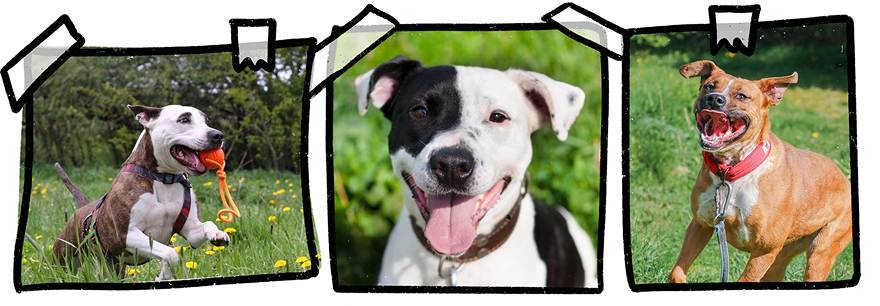
— As far as I know, there is another deeply rooted stereotype connected with the very breed of the dogs: people fear pit bulls, seeing them as “killing machines.”
— Unfortunately, the main stereotype about our breeds is the label “killer dogs.” But if you look at the statistics, there is a far greater chance of being bitten by a shepherd or any guard dog, because guarding is in their blood—it is their job. Our dogs are completely different. Pit bulls and Amstaffs are not fighting dogs; they are companion dogs. By nature, they have no aggression toward humans. I have personally gone many times to pick up chained, lost, or stray dogs from the streets, and not one of them showed aggression. You approach, put the leash on, place the dog in the car, and within five minutes it’s already nuzzling you, licking you as if it’s known you all its life.
Yes, tragedies happen, but almost always they are caused by the owner—when the owner deliberately provokes the dog. Sadly, for some people, a dog is a way to compensate for their own weakness, to show power: “I’m stronger than you, because I have a dog who can defeat anyone.” It is these irresponsible owners who train dogs against people.
But society presents it as though the breed itself is to blame. The headlines are always the same: “Killer dog attacks.” Yet such cases are incomparably fewer than with other breeds, including ordinary strays.
Recently, I saw a video on social media where a pack of strays surrounded a Staffordshire terrier. He stood his ground, fought them off, and in none of his movements was there the slightest sign of aggression. If he had wanted to, he could have grabbed one of the dogs and shaken it violently. But he didn’t—he just snapped, pushed back, defended himself. And yet the caption on the video read: “Fighting dog attacks a pack of strays.” And this is how lies are born.
— And in our story, we already have examples of what any ignorance of the statistics can lead to.
— Yes. In Turkey, for instance, the mass media for years amplified the issue of “dangerous breeds.” And how did it end? Pit bulls and Amstaffs were banned, and then eight more breeds were euthanised. And this year, even ordinary mongrels fell under that ban.
I am deeply afraid that such a trend may continue. Formally, in Russia, euthanising dogs is prohibited by law, but regions have been granted the right to decide for themselves—and in many places, animals are already being eliminated en masse and inhumanely.
This is how stereotypes, backed by sensational headlines, destroy the destinies of thousands of dogs. And the most terrible thing is that dogs pay for human fears and rumours, for someone’s sensational headlines and for someone else’s desire to appear powerful. And they pay with their lives.
— So it turns out that cruelty doesn’t come from animals, but from ourselves?
— Not dogs—they’re not murder machines, but people. It was people who came up with using dogs for fights because of their strength, tolerance for pain, and powerful jaws. Dogs didn’t make that choice.
We often take in mutilated, maimed dogs from baiting and fighting. And you know what? They can sit in adjacent pens without attacking each other. They don’t care! If they’re not forced to fight—they don’t want to. They aren’t born with that malice.
Humans have choices: to take up boxing, karate, or learn to play football. Dogs are not given that choice. No one told them they could be “nannies,” that they could care. Humans forced them to fight. Dogs had no part in it.
How to fight this? Constantly remind, convey, and hammer home that this is illegal, this is not normal. We are humans, after all, rational beings who must be above it. Why do we stoop below a beast? We must promote kind treatment of animals—that is the only way a person can remain human.
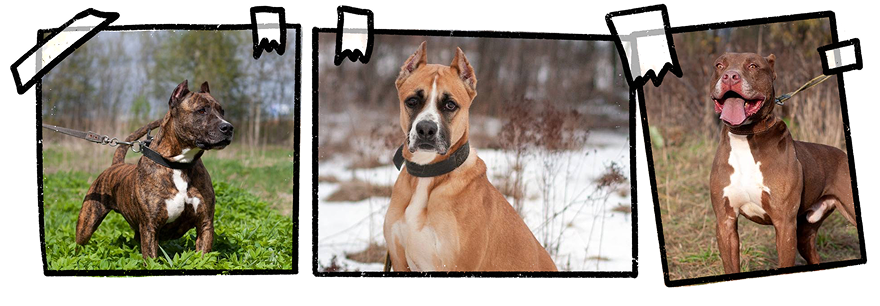
— Then whom do we really need to protect: people from dogs—or dogs from people?
— Good question. I’m the only one in our village who walks dogs on a leash. My dogs are always strictly leashed. I never let them off in the field or the forest—primarily for their own safety. Because I don’t know what could happen: a bunny might dash out, they might run after it, and I wouldn’t catch up in time.
I have a fenced 2,000 square meters of land where my dogs can do anything they want. It’s their territory, where no danger exists. But outside that plot—only leashes.
Unfortunately, not everyone adheres to this. Many go out with their pets off leash. Sometimes I literally have to fend off other animals—holding the leash in one hand for my dog and restraining someone else’s with the other. Meanwhile, the owners just pass by calmly, without even trying to help.
By law, 12 breeds of dogs are recognised as dangerous. Under Russia’s Federal Law “On Responsible Treatment of Animals” and the rules for keeping dangerous breeds, they must wear muzzles in public places, except on their own enclosed property. Even small breeds like Yorkshire Terriers or Chihuahuas must be on a leash. Many people don’t know this and rely on what they see online—but I explain, show the law—and gradually they understand how important it is to follow the rules.
This is what true responsibility for one’s dogs and overall safety looks like.
— Thank you for talking about this. Indeed, if every dog owner followed the rules of walking their pets, unpleasant situations would happen far less often.
— Absolutely.
— And for many of your shelter’s dogs, just the chance to be on a leash and step outside the gates is already a huge joy. Could you describe how the dogs at the shelter greet a new day?
— Of course. A typical morning at the shelter begins with dog walks. At seven a.m., all the staff take the animals out for a stroll. First comes the walk, then feeding.
In terms of feeling—it’s incredibly vivid. Imagine: the doors open, and a pack of happy dogs rush out into the fresh air, tails wagging furiously, ears twitching, eyes sparkling. Each dog takes in the smell of grass, the sound of birds; they are ready to run, jump, play.
At the same time, everything at the shelter is organized strictly and safely: each dog is taken out individually. The exercise yard has two doors—one for entering, one for exiting—so there are no accidental encounters at the doorway, because even the kindest dogs can get startled if they bump into one another suddenly. Staff lead the dogs keeping a safe distance: one group goes out, then the next. This is especially important because among our animals are former fighting dogs, as well as other breeds—Tibetan Mastiffs, Alabai, Huskies, Dogo Argentinos—and even a small misunderstanding could be dangerous.
The field has both a small and a large track, so the dogs never cross paths. The rules of walking in the shelter are designed so that every animal is safe and can fully enjoy its morning outdoors.
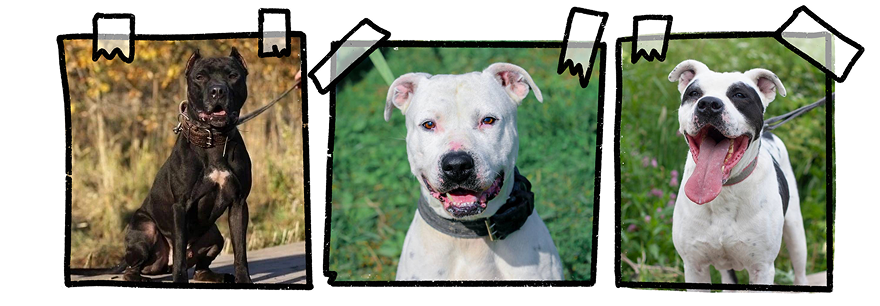
— So it turns out the dogs greet each new day with delight. And what do you feel, coming to the shelter every morning?
— The feelings are very mixed and very alive. There are days when everything seems bad, because of the weight of unresolved problems: buying food, lack of funds, paying for electricity and gas, taxes, veterinary treatments. If one dog falls ill and you can dedicate yourself fully to that one—that’s manageable. But what if there are several? One needs surgery on a paw, another has cancer, a third has something else… You don’t know how to handle it all, how to manage the vet bills, how to give each one enough care. At such moments, there’s no sense of joy at all—you come into the shelter and it feels like a prison. You seem to be doing everything for these abandoned creatures, giving them all your strength, but there’s no hope in sight. Most dogs are in individual enclosures, and looking at them, the weight of responsibility feels especially heavy.
But there are other days too. When problems are solved, when people step in to help and support, then joy returns—the dogs trot out happily, springing along, and hope fills the air again. It feels like today a miracle will happen: someone will arrive and take a dog into a good family, maybe even several dogs will find their long-awaited homes. Filled with this anticipation, you begin to notice how everything changes.
Our perception of the shelter entirely depends on emotional state. When problems pile up, it feels hopeless everywhere. But when tasks are resolved, when people’s help and the dogs’ joy are felt, then everything becomes filled with light and hope.
— Ekaterina, do you think dogs understand that there is someone beside them who has saved them? Maybe they even thank you in some special way?
— Yes, they do understand. Sometimes I arrive at the shelter and one of the dogs is sick and needs to be taken to the clinic. The dog calmly comes to meet me, even though we’ve never met before. At the clinic, it allows all the procedures—ultrasound, examination, injections, bandages—without resistance.
I often take dogs home after surgeries, because they need constant care, injections, dressings. Not a single dog has ever shown aggression. But when the procedures are over, I sit on the couch, they climb up, put their head on my lap, and then kiss my face. And I realize the dog truly feels it is being helped. Even though I am a stranger, someone it has never seen before.
Take my dog Troy, for example. He is a dog of very delicate soul. He can come up, sit next to me, put his head on my shoulder, and we just sit like that for half an hour, simply hugging. I don’t know what he’s thinking about in those moments, but I feel that he is sharing his inner pain, showing that once he suffered, but now he is fine. And I am endlessly grateful for this trust.
You can see everything in a dog’s eyes: their pain, despair, fear, joy. And gratitude. All of it is visible, all of it can be felt.

— Do all shelter dogs find families equally quickly?
— Some dogs are born and immediately find themselves in good homes, where they live for years, and everything is fine. Some find a family on the second try: first they end up in a shelter, then finally they get adopted. There are unfortunate animals that wander from shelter to shelter but never find their person.
And even pedigree dogs with papers, with stamps, with beautiful appearances are not always lucky: they can go through five, six, seven families in a lifetime and still never find their place. They simply become invisible, people stop noticing them.
Some dogs—beautiful and striking—leave the shelter quickly, they are adopted right away. But in general, people choose with their hearts, based on the story that happened to the dog. And often the beautiful dogs are overlooked simply because their story doesn’t touch people’s hearts as deeply. People respond much more strongly if a dog has been rescued from terrible conditions; they show greater compassion and willingness to help.
— How do you keep track of a dog’s fate once it has gone to a new family?
— We always ask for a video from the home the dog is moving into. On the day of arrival, the owner must send us the first footage: how they brought the dog into the house, how it is settling in. At first, we request regular updates—photos, videos, short stories. Later, of course, they send them less often, but they still do.
— I imagine that for a happy dog owner, fulfilling such a request would not be difficult at all.
— You are absolutely right. I once caught myself thinking that I hadn’t taken a picture of myself for several months. Last year, my family and I went for a walk and took our first photo together in a long time. Otherwise, my entire phone gallery is just tails, paws, ears, and snouts. I always joke: “If scammers ever gain access to my phone, let them send any pictures—they’ll all be just cats and dogs anyway.”
— Ekaterina, is there some common trait among abandoned animals?
— Yes, there is. All dogs come to the shelter with the same feeling—fear. You can see it in every trembling paw, every pinned ear, every glance, every lowered muzzle.
It is especially hard for those brought from a home: the owner they lived with one day simply took them out for a walk and then left them here. And the dogs cannot understand why. You lead them into the kennel, and you see all that pain: head down, tail tucked, body shaking. They lower their heads and don’t believe even a drop of kindness awaits them.
Even dogs who return to the shelter after years of living in a family remember this place. They know they won’t be harmed here, that no one will touch them, but their eyes still change—there’s the memory of betrayal in them. For example, just recently we placed an old dog into temporary care. He had spent about a month in the shelter and never once lifted his head: he wouldn’t look at me, at volunteers, or at other staff. He knew he was safe here, but inside him there was still that emptiness left by betrayal. All abandoned dogs carry that emptiness.
At the same time, there are dogs in the shelter who have never known a blanket, food, or even light—pulled straight out of hellish conditions. We once had puppies who, in their previous lives, even ate dirt just to survive, and they looked more like walking skeletons than dogs. To help them adapt more quickly to the shelter, we even had to cover their kennels with dark cloths, because the puppies were afraid of bright light—they had never seen it before. For such dogs, the shelter is paradise, because here there is always a full bowl, warmth, and attention. Their joy is written in every leap, in every look.
But for those who come from a home, their eyes will always show disappointment, loss of trust, and betrayal. And of course, you can never get used to that or remain indifferent.
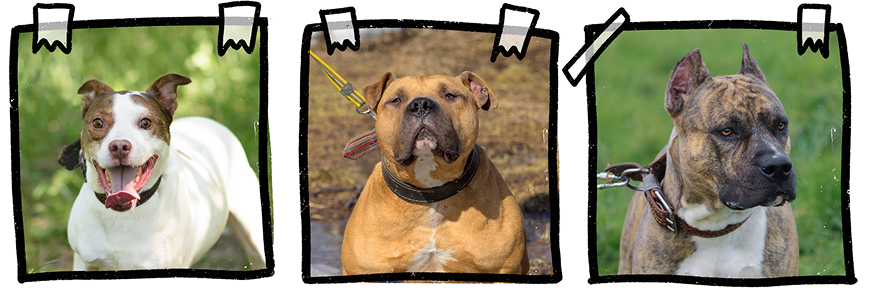
— Listening to the hardships abandoned dogs face, one can’t help but recall the words of a classic: “All happy families are alike; each unhappy family is unhappy in its own way.” Ekaterina, is there an animal whose story has changed you personally?
— Yes. It’s the story of my dog, Ragnar. It all began when his owner—a young man—died in the special military operation. During the funeral, Ragnar was at his parents’ summer house, and at the very moment they were saying goodbye to the owner, the dog dug under the fence and ran away. He ran toward his former home. On the way, on Simferopol Highway, he was hit by a car, fell into a snowdrift, and was left there to die.
He was rescued by chance—Ragnar is black with a white head, so in the snow he was almost invisible, but he was crying out in pain. People driving by noticed the red mouth in the snow, stopped, took him, and brought him to a clinic. The diagnosis: a spleen torn in three places. The dog was twice on the brink of death. Ragnar underwent surgery, then had another X-ray, which revealed a spinal fracture. Another operation was performed, but the chances of recovery were almost zero, because a bone fragment had damaged part of the spinal cord, and the surgery was done too late—on the third day. The doctors were just fighting to keep the dog alive.
The parents of the boy—Ragnar’s owner—saw a post on social media about where the dog was and in what condition, after the funeral. They went to the clinic and took him, because the dog was the only living memory of their son. Then another tragedy struck: the boy’s grandfather died of a heart attack after hearing about his grandson’s death. The father, already devastated, was left alone with a disabled dog. He worked from morning till night, he had his own dogs, but he managed. Then he made a decision—to go to war, to seek revenge.
There was nowhere for Ragnar to go. Naturally, thoughts of temporary foster care arose, but spinal injury dogs struggle greatly in shelters. That’s when I learned about this tragedy and took Ragnar home. It turned out the dog was very ill: besides the fracture, he was diagnosed with gastritis, pancreatitis, gastro-duodenitis. I took him for IV drips twice a day, and then the dog developed a new autoimmune disease—hemolytic anemia.
We were already waiting for a consultation with an oncologist when his second owner returned. We talked. He understood he couldn’t provide the dog with serious care, because Ragnar needed constant trips to the vet. So we decided Ragnar would stay with me for the time being. While we treated him, the owner went to war again, and that’s it—we still don’t know whether he’s alive or not.
Can you imagine? How much grief fell on a single dog: the owner died, the dog became disabled, his second owner went to the front and didn’t return.
I will never forget picking up Ragnar from rehabilitation. I brought him home, we sat on the couch, and suddenly he grabbed my hand with both paws, like a human; his whole body was shaking. I was scared, thinking he was having an epileptic seizure. Then I realized he was just trembling, holding onto me, silently pleading: “Don’t let go. Don’t give me away.”
Ragnar has been living with us for three years now. Even if his owner shows up, we will not give him up. We have been through too much: if something goes wrong, we rush to the clinic, and a week later he’s running around, happy again.
This dog changed my entire life. Before him, I had a business—a cafe and a beauty salon. We closed the cafe when we adopted our first three dogs from the shelter, and I closed the salon the night we had an appointment with the oncologist for Ragnar. My husband and I just looked at each other and realized: that’s it. Now I will stay with the dog—I couldn’t leave him alone in such a fight.
For two and a half years now, I haven’t worked; I devote myself to him. Many stories are touching, but not every story makes you turn your life upside down—and this one did.
For me personally, this story is about how sometimes the greatest thing you can do in life is give all your love to a single being who needs it. And that is enough.
— It’s frightening even to think about how things could have been different.
— Of course, everything could have been completely different. How many dogs remain unnoticed? For example, dogs raised for fighting. These dogs aren’t born killers—they are broken. To break their minds, they are kept in special cages where they cannot even take a step, in complete darkness, given a piece of bread with water once a week just to survive. This is how an animal, born into the world smiling, has its mind destroyed. Under normal conditions, such dogs grow up calm and friendly. And there are very many of these “concentration camps,” and we don’t hear about all of them.
When someone sees this injustice and speaks out, dogs get a chance for a full life. But knowing that somewhere there is hell, and you don’t know where, so you can’t help—it constantly weighs on the soul. You would run, you would rush—but you don’t know where to go. There are many, many such places.

— Ekaterina, I think I’m only now beginning to understand what the phrase “the meaning of life” can really look like, and how often your work must be emotionally exhausting. What gives you strength?
— Yes, days when you feel like giving up, unfortunately, happen quite often. Sometimes there aren’t enough funds, sometimes there’s no way to buy food, pay for electricity, or cover the treatment of a complicated case.
But the worst days come when we realize we were too late. When we rescue a dog but discover we got there too late—for example, when a disease has already progressed too far. We fight, we treat, but unfortunately, the consequences of advanced illness can be irreversible. In those moments, you feel completely defeated.
But you know, even in those moments, there’s always a chance to save another life. Another dog comes along, one you can rescue, one you do save—and suddenly you feel uplifted. You understand that you are not God and cannot save everyone… but the dogs whose lives you have already saved are far more numerous.
— Which rescue story was the most emotionally difficult for you?
— The story of a dog named Tuloya. At first, everything seemed fine; we were receiving photos. But a few days later, in the evening, we got a message: “Tuloya is vomiting blood, she’s very sick.”
We reacted immediately: “Take her to the clinic urgently!” The reply was: “We’ll wait until tomorrow.” But by tomorrow, she might not have survived. So my husband and I drove to Ryazan at eleven p.m., picked her up at one a.m., and spent the whole night going between hospitals. We brought her to Moscow and ran tests: she had two enormous tumors in her spleen, and she needed a blood transfusion. The next day, an ultrasound showed that all her blood had drained into the spleen, and surgery was urgently required—it was her only chance of survival. The doctors gave her a one percent chance, but it was still a chance.
She was operated on that night. The surgery went successfully! We were already hoping for a miracle, but it didn’t happen. One morning, I came to take her out for a walk—and suddenly she worsened dramatically. We fought for her all day, transfusing plasma, but we couldn’t save her. It was hemangiosarcoma—a highly aggressive tumor. The dog passed away in my arms.
My husband and I had already planned to take her home—we have experience treating dogs like her. Everything was planned down to the smallest detail, but fate decided otherwise. This is my greatest loss. I still can’t speak of her without tears. Tuloya is buried at my home.
The biggest mistake was that we placed the dog with the wrong people. They loved her, but their “love” was different. They sincerely believed that a pit bull is a strong breed that “can heal itself.” It’s not that Tuloya’s owners were cruel. It’s just that everyone loves differently—some will rush to the vets, and others will say: “Well, it’s just a dog.”
— That is a very tragic story. Perhaps my question will seem harsh, but I have to ask: how do you find the strength not to hate people after everything you see every day?
— They say God works through the hands of people. And I believe it, because I see it every day. After winter, we went through a very difficult period—huge electricity bills had piled up. And suddenly, the company “Grandorf” donates a large shipment of dog food—several tons. Can you imagine? For two months, we didn’t have to worry about feeding the dogs and could focus on paying the electricity bills. Of course, in moments like that, you feel uplifted.
They helped us connect gas to the shelter, which reduced our electricity bills. When a dog is in the clinic, in intensive care, the bills are enormous—about €500–600 per day. And if surgery is involved, it can exceed €1,200. Of course, that’s terrifying. And at that moment, an Angel appears. Not just a kind person—but an Angel who transfers a large sum. It doesn’t happen often, but there have been cases when an unknown person paid for two days of intensive care at once. In those moments, you feel inspired. Plus, other people chip in little by little—three days’ worth of help. And after three days, the dog might get better and be transferred to a regular ward, which is cheaper.
Every person who helps, supports, or shows care gives you wings. And most people are like that. They help quietly, without seeking attention or expecting anything in return. Someone donates what they can, someone brings medicine, someone just writes: “Stay strong, we are with you.” This help is selfless, sincere, and heartfelt. It is exactly this that creates the invisible network of kindness that keeps us from falling.
Thanks to such Angels, sent to us by God, we are still holding on. Thank God, kind people don’t abandon us—they don’t leave us alone. And as long as they exist, there is hope.
There are also other joyful moments.
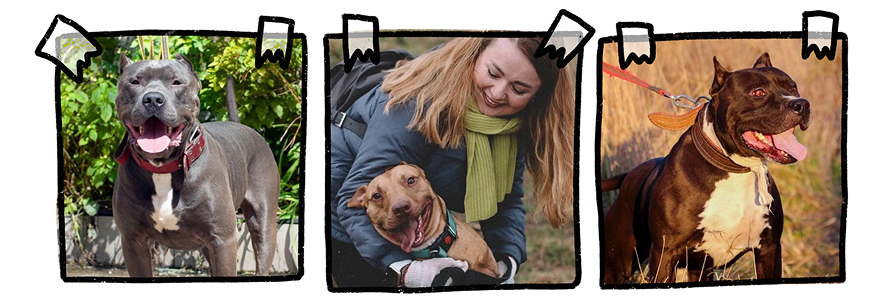
— What kind of moments?
— We receive “greetings” from home: videos where our dogs are swimming in the sea, hiking in the mountains, sleeping on the sofa with children. When people write to us: “This dog saved me after being betrayed,” or “We healed each other’s emotional wounds together with her”—it’s truly balm for the soul.
Or when someone adopts a second or third dog from us with the words: “So the first one will be happier.” That gives you faith. We save two lives: the dog’s and the person’s—they find each other. In moments like these, you especially realize that not all people are bad—there are those who love unconditionally, who are ready to give a home and a heart.
— Ekaterina, then here’s a question: who definitely shouldn’t take a dog from a shelter?
— Dogs are incredibly loyal and trusting. If they meet someone who truly loves and cares for them, they open their hearts instantly. Even dogs from a home, who have only spent a short time in a shelter, are initially cautious, resist certain things, sometimes growl—and that’s normal. We assign one person to them so they can get used to someone and understand: “I am safe.” Within a few days, they are already running with that person, playing, enjoying, eating, and going for walks.
When dogs are adopted into a home, they flourish. They live for their human, for their family, for love and care. All previous betrayals and fears seem to dissolve.
But one must be honest with themselves. If a person is not ready for this kind of life, they shouldn’t adopt a dog. Unfortunately, there are cases when someone takes a dog to “test themselves,” and returns it after a month. This is hard for the animals, especially for those who have experienced real suffering.
Recently, a family asked for our “most hopeless” dog, one who had been in fights and had serious illnesses. He lived with them for a year, and everything was wonderful. He lived with another dog, didn’t bother anyone, was kind and attentive. But circumstances in the family changed, and the dog was returned to the shelter, and we had to find him a home again. Now the dog lives in another family where he is adored.
Dogs teach us loyalty and trust. They forgive everything, adapt, give love, without thinking about the betrayals they’ve endured or might face. People, on the other hand, must learn responsibility so as not to break these hearts.
— Let’s imagine for a moment. If a dog could speak, what word would it say most often?
— The most important word for any dog is, without a doubt, “mom” or “dad.” Depending on who they have—a complete family or a single guardian. They would constantly repeat the name of the one they are waiting for, the one they trust unconditionally, and the one they love with all their doggy heart.
— And if every shelter dog had, say, its own slogan?
— Slogans Slogans, like dogs, would all be very different. For a quiet dog, who sits modestly in the corner and looks at you with devoted eyes, the slogan could be: “A quiet dog with a loud heart.” Or: “I am more than just a dog, but my modesty won’t let me say it.”
You look at these dogs and marvel at how deeply they feel, how much they want to connect, and in that moment, it’s as if they whisper: “I’m here. I’m yours. Just let me be by your side.”
Right now, we have a little girl at the shelter who has completely stolen my heart. She wouldn’t even go for a treat until I called her, just sitting there hugging her ball… I will move heaven and earth, but I will find her a home. I will definitely find one.
For a mischievous, energetic dog, a little bundle of endless energy and joy, the slogan would be completely different: “Ready for anything, even if not ready!” Because such dogs are springy, constant sources of energy and happiness.
But all dogs—quiet or lively—share one common, most important trait: their true, unique slogan that comes from the depths of their soul is: “Not perfect, but reliable.”
I’ve never met a dog that betrayed a human. I haven’t seen a single dog abandon its owner because the owner fell ill, lost their job, or ended up homeless. Dogs don’t need wealth; they need a person, a chance simply to be with them. And they love us unconditionally as we are. Even if an owner is angry or unfair, the dog still loves them. This love goes beyond human comprehension.
We humans are different—we leave places where we feel bad. We can just turn around and walk away. Dogs cannot. They carry that loyalty and devotion within them, a level of fidelity we humans still have to learn to reach.
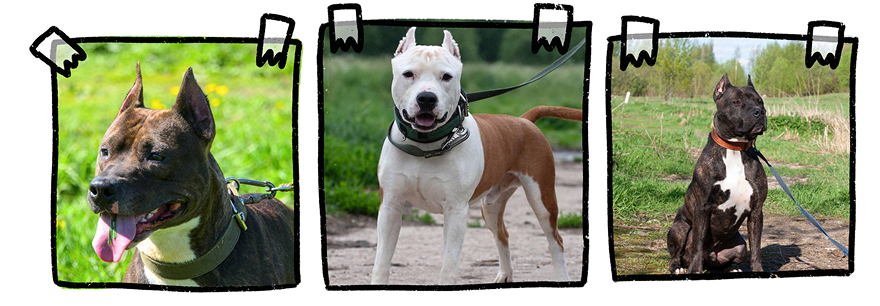
— Ekaterina, our interview is nearing the end, so let’s think together: what can we do to ensure fewer unfortunate animals end up in shelters?
— Unfortunately, for now, we have very limited options. It all comes down to laws: as long as dogs are considered property in the eyes of the law rather than living beings, nothing will change fundamentally. Humans are wired so that we only truly fear something when real consequences follow.
Mandatory animal registration must be introduced. Owners should bear the same responsibility for a dog as they would for a child. You wouldn’t take your child and leave them in the forest, right? But for some reason, people do this with dogs because nobody will be held accountable. This must change.
Mandatory sterilization should be enforced so that kittens or puppies aren’t born five times a year, only to be drowned or abandoned in a box by the roadside or outside a store. This must be regulated.
Unlicensed breeding should be banned. Breeding for “appearance” or to sell more puppies for a profit—say €500–€1000 per puppy—should be prohibited. Breeding must only be allowed in licensed kennels.
European animal protection laws should be enforced to ensure that anyone who physically abuses or kills a dog faces real legal consequences, not just a “warning” or minor fine. For example, under the EU Animal Welfare Directive and national legislation in many EU countries, physical abuse of pets can result in significant criminal penalties.
Parental responsibility must also be enforced. There are too many cruel children who torture, burn, or maim animals. A seven-year-old would not think of tying a dog to a bicycle and dragging it along the pavement if such an idea wasn’t introduced to them. Parents must be held accountable for their children’s actions: if mothers or fathers are punished for the child killing a kitten, they will start paying attention to what their child does outside.
People often say to me: “A cruel child doesn’t come from a good family,” and I agree. I have a very large family myself: children, grandchildren, and a ton of animals. And none of us would ever think of killing a living creature for no reason. Why would we?
For example, I have a terrible phobia—I’m terrified of caterpillars. Their sight can make me cry for hours. I fear them so much that I don’t plant apple or cherry trees on my property—only decorative bushes—to minimize the chance of encountering one. Yet, I’ve never once thought of crushing them. I know they will become butterflies, and I enjoy watching them from a distance because I remember their past.
Everything starts with the family, with respect for life in all its forms. And only when this respect becomes the foundation of our society and laws will things begin to change.
— And the final question: what has interacting with creatures broken by humans taught you?
— I learned one simple thing: cruel people, those who harm animals, are actually weak and cowardly. Among them, there are none who would stand up to an equal. They can only inflict pain on someone weaker.
Now I know for certain: if a person doesn’t love animals, if they shoo away a stray cat with disgust or might hit a dog, that is someone we cannot walk with. You need to stay far away from them, because they have no empathy for the vulnerable. As long as you are strong, they’ll stay with you. But the moment you fall ill or find yourself in trouble—they will betray you and discard you from their life like an unwanted object.
And those who are moved by a suffering cat with infected eyes, who are ready to take in a hungry dog from the street—these people will never leave you in trouble, whether they are a friend, husband, or wife. They will carry you, care for you, run to hospitals, because they possess what makes a human truly human—compassion. That is the main lesson.
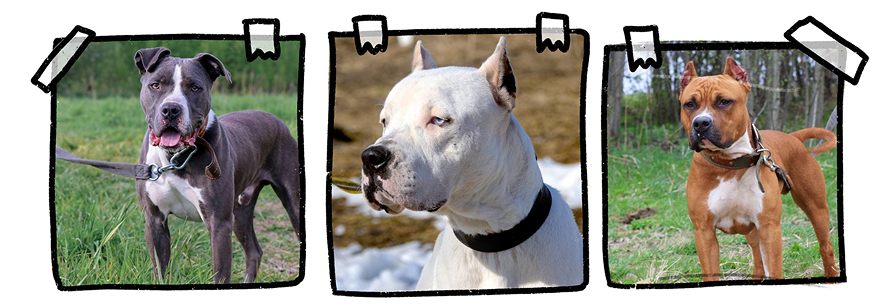
We’ve ventured beyond the boundaries of time and space. By the way, it’s empty there.
Thank you!




